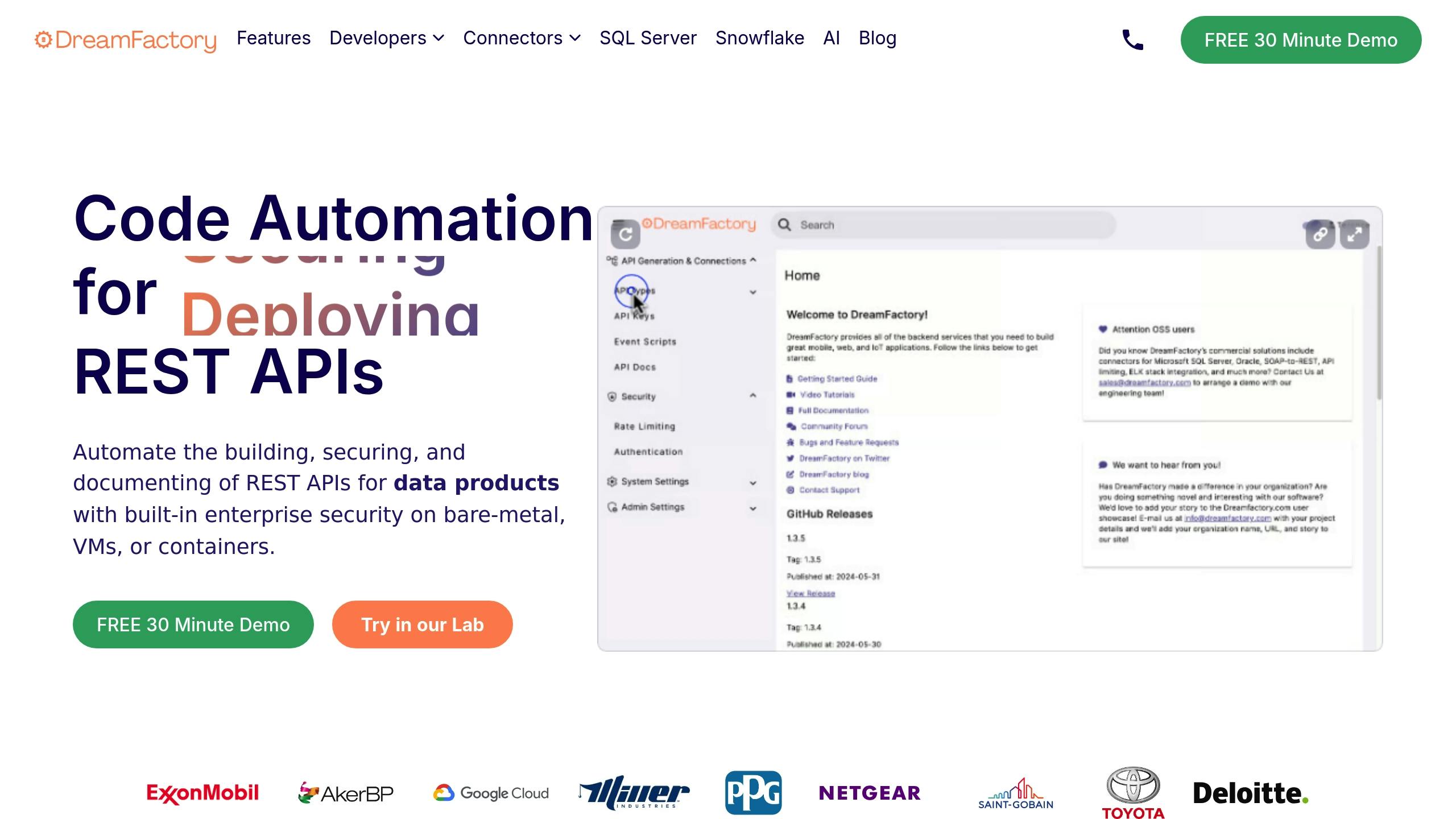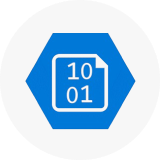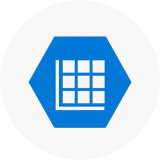Struggling with secure, real-time enterprise data access? RAG (Retrieval-Augmented Generation) systems are popular but often fall short in handling dynamic data, security, and compliance. Enter agent-based systems - designed to securely connect AI to live databases, APIs, and ERP systems while enforcing strict permissions and audit trails.
Key Takeaways:
RAG systems lack granular security, real-time updates, and detailed compliance tracking.
Agent-based systems dynamically access live data with robust authentication, authorization, and logging.
Tools like DreamFactory simplify API generation, ensuring secure and scalable data access.
Why It Matters: For industries like finance or healthcare, agent-based approaches reduce security risks by 99% and save over $200K annually in development costs. They’re ideal for secure, real-time operations where precision is critical.
Quick Overview:
RAG Systems: Good for document-heavy tasks but limited in security and real-time access.
Agent-Based Systems: Superior for live, sensitive data with detailed access controls.
DreamFactory: Automates secure API creation, cutting development times from weeks to minutes.
This shift from static RAG to dynamic agent-based systems ensures better security, compliance, and efficiency in enterprise data management.
Unlocking Enterprise Data to Agents with MCP
Enterprise Data Security: Core Principles
Enterprise data security is all about defining who can access what information, when they can access it, and how they do so. As companies move away from older data management methods, mastering these principles becomes essential - not just to protect sensitive data, but also to keep operations running smoothly.
At its core, enterprise data security relies on three key elements: authentication, authorization, and audit trails. Authentication ensures users are who they claim to be, authorization determines their access rights, and audit trails document every interaction. These principles are especially relevant when examining the weaknesses of RAG methods and the need for better API management.
Problems with RAG Methods
RAG systems come with some serious security flaws. One of the biggest risks is data exposure through vector embeddings. When these systems process documents, they convert sensitive information into vector formats stored in databases. If third-party vector storage services are used, there's a real risk of confidential data being leaked.
Another challenge is the lack of granular access control. RAG systems often operate with broad permissions, enabling access to entire document repositories instead of just the necessary subsets. This goes against the principle of least privilege, which limits access to only what’s essential for a specific task.
Real-time updates pose another issue. When permissions change - like when an employee leaves or switches roles - RAG systems often lag in implementing these updates. Cached data and embeddings can delay enforcement, leaving a window where unauthorized users might still access sensitive information.
Compliance tracking is a further headache. RAG systems struggle to provide detailed logs of who accessed what data and when. For organizations subject to regulations like GDPR, HIPAA, or SOX, this lack of transparency can lead to compliance violations and hefty fines.
Building Security into API Management
Securing APIs starts with strong authentication mechanisms. Simple API keys aren’t enough for enterprise systems. Instead, methods like multi-factor authentication, token-based access, and certificate-based authentication are necessary. Standards like OAuth 2.0 and OpenID Connect are widely adopted because they offer scalable and secure frameworks for authentication.
Role-based access control (RBAC) is another cornerstone of API security. Rather than giving users or systems blanket permissions, RBAC assigns specific roles with clearly defined access rights. For example, a marketing tool might only have read access to customer contact details, while being completely restricted from financial data.
Encryption is critical. Data should be encrypted during transmission (using protocols like TLS 1.3+), when stored, and even at the field level for highly sensitive information like Social Security numbers or credit card details. Losing encryption keys can be as damaging as a data breach, making key management systems a vital part of the security equation.
Rate limiting and throttling protect systems from accidental overload and malicious attacks. These controls limit the number of API requests a user or system can make in a given timeframe. For instance, a customer service agent might be capped at 1,000 API calls per hour, while automated systems might have higher limits during off-peak hours.
Anomaly detection adds another layer of security by flagging unusual activity - like a sudden spike in data requests, access attempts from unexpected locations, or efforts to reach restricted resources. Modern API management platforms can respond automatically by triggering alerts, suspending access, or requiring additional authentication. Centralizing these measures through API gateways ensures consistent security across all systems.
How Gateways Centralize Security
API gateways play a pivotal role in bridging traditional RAG systems and modern agent-based approaches. Acting as a single control point, gateways simplify security management by enforcing consistent policies across all data access requests. This eliminates the need to implement separate security measures for each system or database, reducing complexity and minimizing gaps.
One major advantage of gateways is unified logging. Every API call is logged with details like user identity, timestamps, accessed resources, response codes, and data volumes. These logs create a comprehensive audit trail, making compliance reporting much easier.
Automated policy enforcement is another benefit. Security rules defined at the gateway level automatically apply across all connected systems. For instance, a policy requiring extra authentication to access financial data would be enforced whether the request comes from an ERP system, an accounting database, or a reporting tool.
Gateways also enable instant security updates. When policies change - such as revoking access for a former employee or updating rules to meet new regulations - the gateway applies these changes across all connected systems immediately. This eliminates the delays and vulnerabilities that occur when updates are applied manually.
A platform like DreamFactory demonstrates the power of this centralized approach. It generates secure APIs with built-in features like authentication, authorization, and logging, sparing organizations from developing custom solutions for each data source. DreamFactory handles complex requirements such as JWT token validation, role-based permissions, and detailed audit trails, simplifying the process for enterprises.
Finally, traffic analysis and threat detection become much more effective when all API activity flows through a central gateway. By analyzing patterns across the entire system, security teams can identify potential threats - like coordinated attacks or unusual access requests - that might go unnoticed if monitoring individual systems. This holistic view allows for faster, more effective responses to potential breaches.
Agent-Based Systems: Automating Enterprise Data Access
Agent-based systems represent a shift from static data queries to intelligent agents that evaluate requests and securely access data across various enterprise systems. These systems align with business logic and security protocols, ensuring workflows are executed under tight safeguards. Let’s explore how these agents seamlessly manage API calls to integrate different systems.
How Agent-Based Systems Work with APIs
Agent-based systems are adept at managing multiple API calls to complete complex tasks. Instead of relying on manual integrations for every service, these agents dynamically decide which APIs to use and in what order, based on the context and permissions of the request. For instance, an agent handling a customer information inquiry might authenticate with the CRM to retrieve basic details, connect to the billing system for payment history, and access support tools for service records - all automatically orchestrated based on the situation.
Security Features in Agent-Based Systems
Security is a cornerstone of agent-based systems. They implement enterprise-grade protocols, such as Agent2Agent (A2A), to ensure robust authentication and authorization at every stage of a workflow. Unlike simpler, user consent–based models, A2A is built specifically for enterprise environments, addressing the stringent requirements for managing sensitive data workflows. This ensures that every interaction remains secure, even as agents handle complex automation tasks.
Protocols for Agent-Based Interactions
To maintain security and efficiency, agent-based systems rely on specialized interaction protocols. Two key protocols - Model Context Protocol (MCP) and Agent2Agent (A2A) - are shaping how agents interact with enterprise systems and among themselves.
MCP: Developed by Anthropic, MCP standardizes how AI applications connect to data sources, files, and APIs. It provides agents with the necessary tools and context to securely access external resources.
A2A: Created by Google and partners, A2A supports agent collaboration across multiple systems. While MCP focuses on granting individual agents access to tools and data, A2A enables coordinated efforts between agents.
|
Protocol |
Primary Focus |
Communication Style |
Security Approach |
|---|---|---|---|
|
MCP |
Connects agents to tools and data sources |
Tool invocation |
User consent–based with data access controls |
|
A2A |
Enables agent-to-agent collaboration |
Two-way communication |
Enterprise-grade with stateful task management |
MCP equips agents with the context and tools they need to access resources securely, while A2A facilitates multi-agent collaboration for tasks spanning different systems. A2A’s stateful design is particularly suited for managing long-running workflows that may involve multiple steps, defined task states (like submitted, working, or completed), and even human intervention when necessary. Together, these protocols signal a move beyond traditional RAG methods, offering a more dynamic and secure framework for enterprise data access.
DreamFactory: Automating Secure API Generation

As businesses increasingly adopt agent-based access control for data security, DreamFactory offers a solution that simplifies and secures the process of API generation. By automating the creation of secure APIs, DreamFactory provides a centralized platform that eliminates the need for manual development while ensuring high security standards.
DreamFactory streamlines the creation of REST APIs directly from databases, enforcing strict security protocols and removing the complexities of custom API development. This approach addresses a key challenge for enterprises: granting agents secure and standardized access to data without compromising security or requiring extensive resources.
Instant API Generation with Advanced Security
DreamFactory stands out by automatically generating REST APIs from databases and stored procedures, all while embedding enterprise-level security features. For example, its role-based access control (RBAC) allows precise permission settings - such as read-only access for customer service representatives or write access for billing teams.
To further enhance security, DreamFactory includes built-in API key management and supports OAuth 2.0, enabling seamless integration with existing enterprise identity systems. Additionally, the platform provides auto-generated Swagger documentation, giving agents clear, structured details about available endpoints, required parameters, and expected responses.
Broad Database and Integration Support
DreamFactory supports over 20 database connectors, including widely-used systems like Snowflake, SQL Server, and MongoDB. These connectors ensure that enterprises can standardize REST API access across various database technologies, allowing agents to interact with data sources seamlessly.
The platform also simplifies the modernization of legacy systems by converting SOAP APIs to REST, making older data systems accessible without the need for expensive migrations or overhauls.
Key Operations and Compliance Features
DreamFactory integrates powerful tools like the ELK stack for logging and audit trails, helping businesses maintain compliance with regulations such as GDPR and HIPAA. Its features include encryption, detailed access logging, and data retention policies, ensuring a secure and compliant environment.
For added flexibility, DreamFactory supports server-side scripting using Python, PHP, NodeJS, and V8JS, enabling custom business logic and data transformations. The platform is built to scale, supporting unlimited API creation and handling high volumes of API traffic with ease.
Best Practices for Agent-Based API Management
Agent-based API management thrives on well-thought-out strategies that enhance both data oversight and operational efficiency. Let’s dive into the key practices that can reshape how APIs function within enterprise systems.
Creating Internal Standards and Reusable Components
Establishing consistent API standards across your organization is crucial for effective agent-based management. This involves setting up uniform naming conventions, response formats, and authentication protocols that all teams adhere to. With these in place, agents can better anticipate API behaviors, making interactions smoother and more reliable.
Reusable components are another game-changer. They save development time and reduce maintenance headaches. For instance, a standardized user authentication module can be deployed across multiple agents, whether they’re handling customer service, billing, or inventory management tasks.
To further streamline operations, ensure auto-generated documentation is in place. Up-to-date endpoint specifications minimize integration errors and speed up deployments. Additionally, adopting semantic versioning and consistent error response formats ensures that updates don’t disrupt existing workflows.
Running Regular Security Audits and Compliance Checks
Strong internal standards are just the starting point - security and compliance measures must be ongoing to maintain a robust system.
Automated security scans should continuously monitor your API infrastructure, flagging vulnerabilities, unauthorized access attempts, and configuration issues before they escalate. Pair these with monthly comprehensive audits and weekly targeted scans for a layered defense.
Monitoring API call frequencies and data access patterns is another must. Any unusual activity should trigger immediate reviews, while automated checks help ensure compliance with regulations like GDPR, HIPAA, or SOX.
For an external perspective, schedule penetration tests with third-party security firms. These tests, conducted quarterly for high-risk environments or annually for standard operations, should focus on areas like agent authentication, data exposure risks, and API gateway settings.
Finally, implement certificate and credential rotation to prevent long-term security risks. Automate the renewal of API keys, SSL certificates, and authentication tokens, ensuring agents can update credentials without disrupting services.
Agent-Based vs. RAG Approaches: A Comparison
Let’s break down the differences between agent-based systems and Retrieval-Augmented Generation (RAG) approaches to see why agent-based systems often lead in managing sensitive, real-time data.
|
Aspect |
Agent-Based Systems |
RAG Systems |
|---|---|---|
|
Security Control |
Granular, role-based permissions with real-time access |
Limited to document-level security, harder to enforce |
|
Data Freshness |
Real-time access to live systems |
Relies on document indexing cycles, leading to delays |
|
Scalability |
Scales horizontally via API gateways and load balancing |
Limited by vector database and embedding processes |
|
Integration Complexity |
Direct API connections to existing systems |
Requires preprocessing and embedding pipelines |
|
Compliance Tracking |
Detailed audit trails for all data access |
Limited visibility into specific retrieval patterns |
|
Cost Structure |
Predictable API call-based pricing |
Costs vary with document volume and embedding needs |
Agent-based systems shine in scenarios where real-time data access and strict governance are critical. This makes them ideal for industries like financial services and healthcare, where precision and control are non-negotiable.
On the other hand, RAG systems are better suited for handling large volumes of unstructured data, especially when approximate answers suffice. They work well for knowledge management, customer support documentation, and research, where the focus is on context rather than exactness.
Sometimes, the best solution is a hybrid approach. By combining agent-based systems for structured data with RAG systems for document retrieval, organizations can leverage the strengths of both while mitigating their limitations. This ensures secure, scalable, and efficient data access tailored to diverse enterprise needs.
Conclusion: Secure and Scalable Enterprise Data Access
The move from traditional RAG methods to agent-based systems marks a significant evolution in how enterprises manage data access and security. While RAG methods are useful in document-heavy setups, agent-based architectures provide the real-time accuracy and detailed security controls that today’s businesses require.
Organizations using agent-based API management have reported a staggering 99% drop in common security risks. Beyond security, the financial benefits are clear: these systems save an average of $201,783 annually on development costs and $45,719 per API. By slashing development times and reducing costs, companies can accelerate their path to market success.
For instance, DreamFactory enables production-ready APIs in just 5 minutes, a process that could otherwise take weeks or even months with older development methods.
To successfully implement agent-based systems, enterprises need platforms that balance flexibility with simplicity. DreamFactory delivers on this by supporting deployment across bare metal, virtual machines, or containers, while also offering unlimited API creation and traffic volume. This ensures your infrastructure can expand seamlessly as your business grows.
With its focus on built-in security, operational efficiency, and scalability, agent-based architecture is shaping the future of enterprise data access. By adopting these systems, businesses can stay ahead of the curve and secure a competitive advantage.
FAQs
Agent-based systems bring a new level of security and compliance by placing specialized software agents directly on individual devices. These agents work nonstop, keeping an eye on activities, enforcing security rules, and detecting threats in real time. By safeguarding sensitive data right at its source, this method reduces potential vulnerabilities and gives organizations tighter control over their security environment.
In contrast to traditional RAG methods, which depend on centralized data retrieval and can inadvertently expose data to risks, agent-based systems deliver detailed, endpoint-specific security. This approach reduces potential attack points and helps meet stringent data privacy requirements. On top of that, these systems simplify secure credential management and access control, ensuring they align perfectly with enterprise identity and access policies.
What are the main advantages of using DreamFactory for creating APIs in agent-based systems?
DreamFactory streamlines the process of creating APIs for agent-based systems by automating the generation of secure, RESTful APIs. This automation can cut development time by as much as 85%, freeing up teams to concentrate on innovation instead of getting bogged down with manual coding tasks.
The platform also includes role-based access control (RBAC), ensuring that sensitive data remains secure and is only accessible to authorized users. This feature makes DreamFactory an excellent choice for managing enterprise data effectively while upholding strong security protocols.
How do MCP and A2A protocols ensure secure and efficient data access in agent-based systems?
Protocols like MCP (Model Context Protocol) and A2A (Agent-to-Agent) play a crucial role in maintaining secure and efficient data handling within agent-based systems. They provide standardized frameworks that prioritize both security and the ability to scale.
MCP focuses on bolstering data security by implementing consistent authentication and authorization measures. This reduces the chances of unauthorized access while ensuring that sensitive information is handled and retrieved securely. On the other hand, A2A simplifies communication between agents by enabling smooth and secure data exchanges, all while supporting the scalability required for enterprise-level operations.
By working together, these protocols help organizations manage and access data securely, enhance operational workflows, and support seamless system integrations.
Terence Bennett, CEO of DreamFactory, has a wealth of experience in government IT systems and Google Cloud. His impressive background includes being a former U.S. Navy Intelligence Officer and a former member of Google's Red Team. Prior to becoming CEO, he served as COO at DreamFactory Software.
























 Blog
Blog



